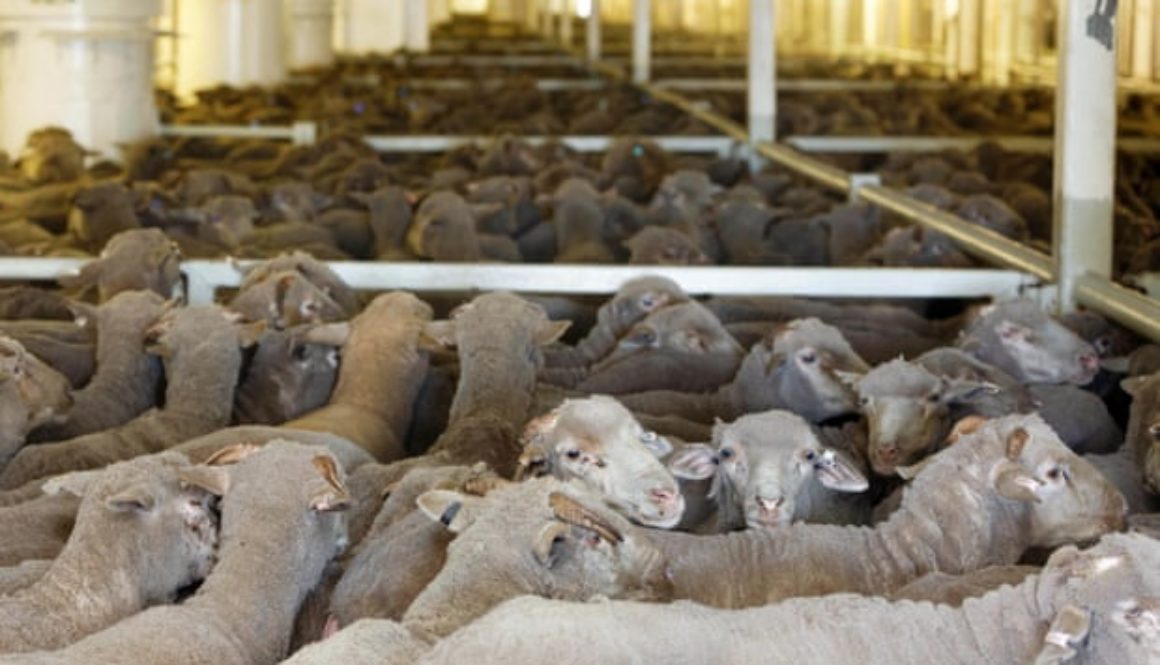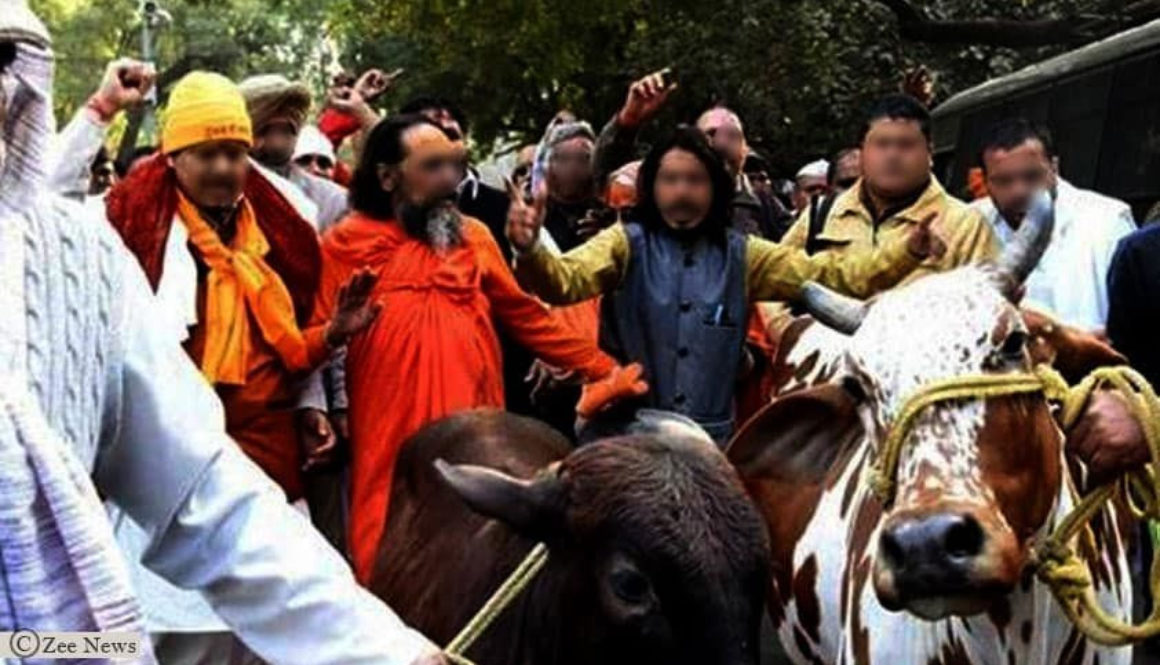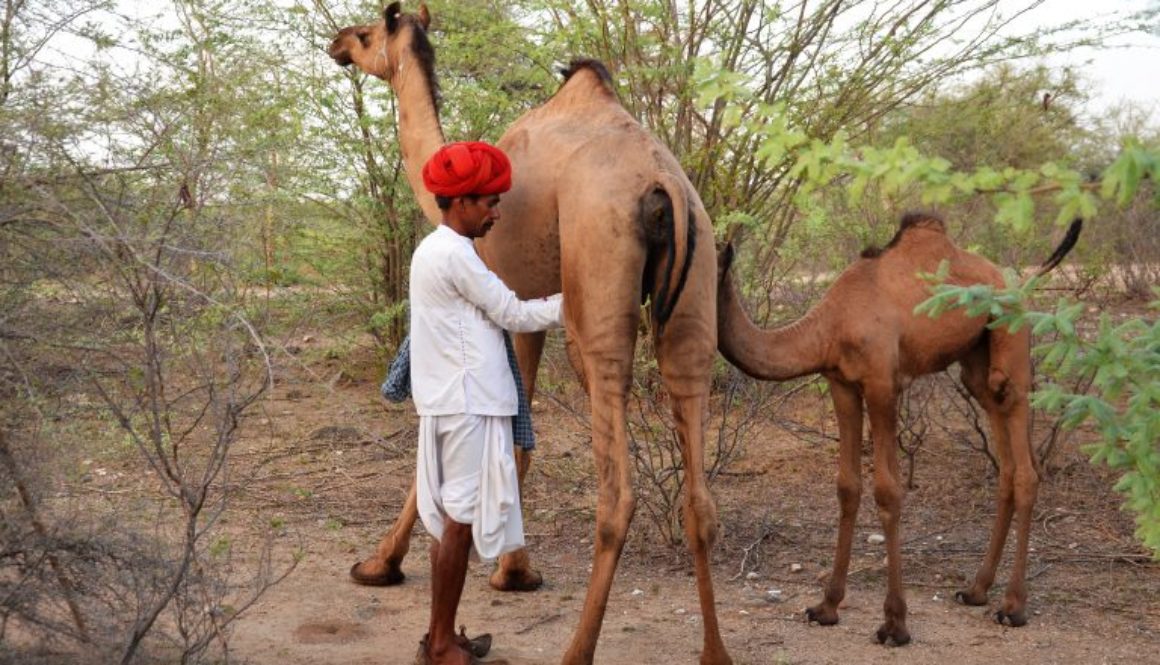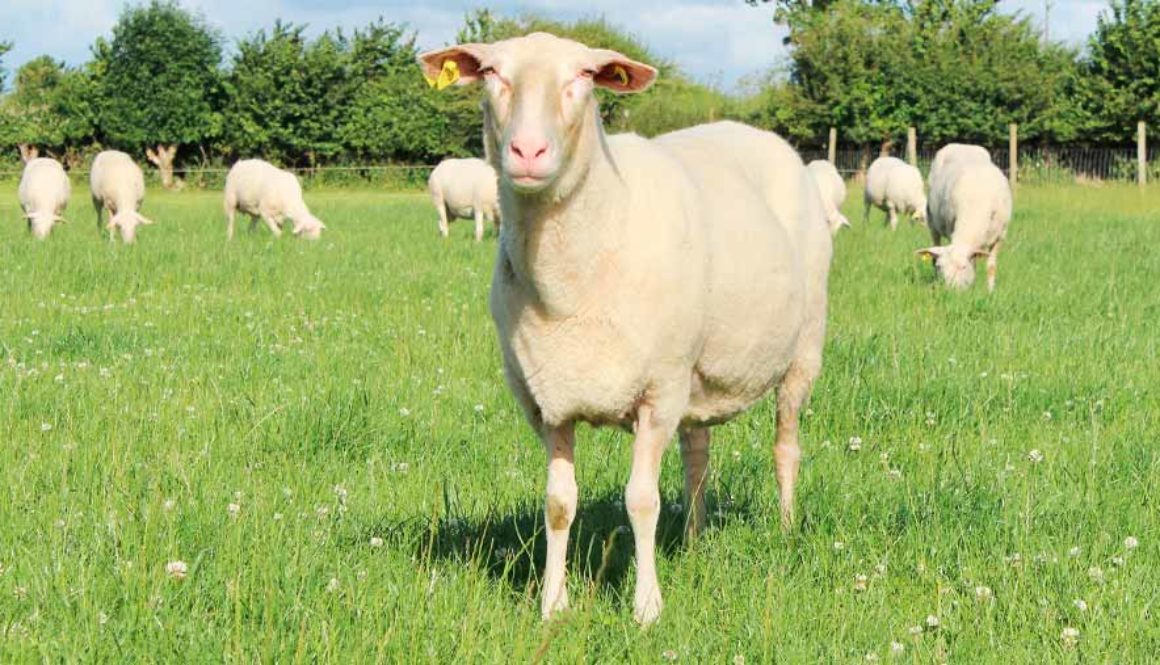THERE ARE MORE THAN 9 million dairy cows in the United States, and the vast majority of them are Holsteins, large bovines with distinctive black-and-white (sometimes red-and-white) markings. The amount of milk they produce is astonishing. So is their lineage. When researchers at the Pennsylvania State University looked closely at the male lines a few years ago, they discovered more than 99 percent of them can be traced back to one of two bulls, both born in the 1960s. That means among all the male Holsteins in the country, there are just two Y chromosomes.
If Holsteins were wild animals, they would fit in the category of critically endangered species.
“What we’ve done is really narrowed down the genetic pool,” says Chad Dechow, one of the researchers.
The females haven’t fared much better. In fact, Dechow — an associate professor of dairy cattle genetics — and others say there is so much genetic similarity among them, the effective population size is less than 50. If Holsteins were wild animals, that would put them in the category of critically endangered species. “It’s pretty much one big inbred family,” says Leslie B. Hansen, a Holstein expert and professor at the University of Minnesota.
Any elementary science student knows that genetic homogeneity isn’t good in the long term. It increases the risk of inherited disorders while also reducing the ability of a population to evolve in the face of a changing environment. Dairy farmers struggling to pay bills today aren’t necessarily focusing on the evolutionary prospects of their animals, but Dechow and his colleagues were concerned enough that they wanted to look more closely at what traits had been lost.
For answers, the researchers have begun breeding a small batch of new cows, cultivated in part from the preserved semen of long deceased bulls, to measure a host of characteristics — height, weight, milk production, overall health, fertility, and udder health, among other traits — and compare those to the modern Holsteins we’ve created. The hope is that they might one day be able to inject some sorely needed genetic diversity back into this cornerstone of livestock agriculture, and possibly reawaken traits that have been lost to relentless inbreeding.
“If we limit long term genetic diversity of the breed,” Dechow says, “we limit how much genetic change can be made over time.”
In other words, we could reach a point where we’re stuck where we’re at. There will be no more improvement in milk production. Fertility won’t improve. And if a new disease comes along, huge swaths of the cow population could be susceptible, since so many of them have the same genes.
HOLSTEINS TODAY are responsible for the vast majority of milk we drink and much of our cheese and ice cream. For at least the past century, these animals have been prized for their voluminous output. Over the last 70 years or so, humans have introduced a variety of methods to ramp up production even further. In 1950, for example, a single dairy cow produced about 5,300 pounds of milk a year. Today, the average Holstein is producing more than 23,000. In 2017, a prize-winning cow named Selz-Pralle Aftershock 3918 cranked out 78,170 pounds of milk — more than 200 pounds every single day.
“These cows are real athletes,” says Hansen.
This benefits consumers by keeping food prices low. It benefits farmers because they save on costs when fewer cows produce the same amount of milk. It also benefits the environment because a cow’s digestive system produces considerable amounts of methane and waste. (Although high-producing Holsteins consume more energy and generate more waste per cow, researchers estimate that the efficiency gains result in significantly reduced environmental impacts overall.)
Part of this success story has to do with changing the way Holsteins are raised and managed. But the biggest change has been in the way cows are bred. Long ago, farmers would bring in bulls from other farms to get their cows pregnant — a way of ensuring genetic diversity, or “stirring the pot,” as Hansen says. In the 1940s, they began to use artificial insemination. This way, a single dose of bull semen could be used to impregnate a whole lot of heifers. Soon, technology allowed the semen to be frozen, which meant a bull could father calves for decades, even long after he was dead. Meanwhile, the dairy world was keeping very detailed records, so the bull studs who sell the semen could tell which bull went on to produce the best offspring — and by the best offspring, they meant the daughters who produced the most milk.
By this point, a highly sought-after bull would sire thousands of daughters. Carlin-M Ivanhoe Bell, a bull born in 1974, had more than 80,000 offspring. Most bulls have fewer, though their progeny still number in the thousands. By the 80s, it was clear inbreeding was increasing significantly.
In 2017, a prize-winning cow named Selz-Pralle Aftershock 3918 cranked out 78,170 pounds of milk — more than 200 pounds every single day.
In the early days of artificial insemination, bulls would have to prove their merit in real life. That is, they’d sire 100 daughters, then when those daughters calved and began producing milk, their output was measured. The better the output, the more marketable the bull. This “progeny testing” was a valuable process, but it took several years to determine if a bull was any good.
In 2009, new technology came along: big data and genomic selection. Today, a bull’s marketability is determined by a computer. A complex algorithm analyzes the bull’s genetic makeup, taking into account the health of his offspring, their milk production, the fat and protein in the milk, and other traits, to come up with figures that rank him against other bulls. The key figure is called lifetime net merit. It represents the average amount of money a farmer can expect to earn over the offspring’s life by choosing this bull over another one.
While this allowed farmers to more efficiently evaluate animals across many key traits, the process also led to even higher rates of inbreeding. The “inbreeding coefficient” for Holsteins is currently around 8 percent, meaning an average calf gets identical copies of 8 percent of its genes from its mother and its father. That number is in comparison to a baseline of 1960 — and it continues to increase by .3 or .4 every year.
“Inbreeding is accumulating faster than it ever has,” Dechow says.
But is 8 percent too much? Dairy experts continue to debate this. Some argue that Holsteins are doing their job, producing a lot of milk, and that they’re a relatively healthy bunch. Hansen, however, notes that if you breed a bull to his daughter, the inbreeding coefficient is 25 percent; in that light, 8 seems like a lot. He and others say while inbreeding may not seem like a problem now, the consequences could be significant.
Fertility rates are affected by inbreeding, and already, Holstein fertility has dropped significantly. Pregnancy rates in the 1960s were 35 to 40 percent, but by 2000 had dropped to 24 percent. Also, when close relatives are bred, it’s more likely for cows get two copies of unwanted recessive genes, where serious health problems could be lurking.
“Something needs to change,” Hansen says.
For Dechow, the concern is the rate of increase and what that means for the future of the breed. “Imagine you’ve got a cow who has 100 really good genes and 10 really horrible genes. You eliminate that cow from your breeding program because she’s got 10 horrible genes,” he says, and “you’ve lost her 100 good ones, as well. You’re losing long-term genetic potential.”
DECHOW GREW UP ON a dairy farm, so long before he knew the ins-and-outs of the cow’s genome, he could see some of what was happening.
Holsteins look very different than they did 50 years ago. For one thing, they’ve been bred to have longer and wider udders, rather than deep ones. A deep udder can touch the ground, making it much more prone to infection or other problems, so that’s a change for the better. But other changes could be problematic. For example, modern Holsteins are bred to be tall and thin, to the point of boniness. That thinness is a byproduct of milk production, because “they’re directing the energy they consume towards milk,” Dechow says.
But it’s also something of an aesthetic choice. The ideal Holstein cow — at least in the view of people who judge these things — is “feminine and refined.” That means thin and angular. The problem is, a tall, thin cow isn’t necessarily the healthiest cow and shorter and rounder cattle are more likely to get pregnant.
“If we limit long term genetic diversity of the breed,” Dechow says, “we limit how much genetic change can be made over time.”
A few years ago, Dechow and others started to wonder, just how significant was the inbreeding and loss of diversity? In the early 50s, there were about 1,800 bulls represented in the population. They knew there were fewer today, but they had no idea how few. Dechow and his colleagues Wansheng Liu and Xiang-Peng Yue analyzed the paternal pedigree information of nearly 63,000 Holstein bulls born since the 1950s in North America.
“We were a little bit surprised when we traced the lineages and it went back to two bulls,” he says. They’re named Round Oak Rag Apple Elevation and Pawnee Farm Arlinda Chief. Each one is related to about half the bulls alive today. Essentially, Elevation and Chief outcompeted every other bull on the market. Even Select Sires, a company that is in the business of selling bull semen, was surprised by the findings. Charles Sattler, a company vice president, sees the news as a bit of a reality check, but not a cause for alarm. “Probably the biggest concern is, are there any really valuable genes we may have lost along the way that we could make use of today?” he wonders.
Not too long ago, there was another Y chromosome represented, that of Penstate Ivanhoe Star, born in the 1960s. His decline demonstrates one problem with all this inbreeding. In the 1990s, dairy farmers around the world started noticing calves being born with such serious vertebrae problems, they didn’t survive outside the womb. Around the same time, calves were being stillborn with a condition called bovine leukocyte adhesion deficiency. It turns out Star, and his prolific son, Carlin-M Ivanhoe Bell, had problematic recessive genes that didn’t come to light until a few generations of inbreeding.
After this discovery, farmers stopped breeding cows to Star’s descendants and that problem was resolved. But could other problems be lurking within the chromosomes of our remaining Holsteins? What had been lost with all this inbreeding? These questions troubled Dechow enough that he began searching out some of those old genes.
That required digging into the archives of the National Animal Germplasm Programin Fort Collins, Colorado. It’s like a seed bank, except it collects ovarian tissue, blood, and semen from domesticated animals, and it holds about 7,000 cocktail-straw-sized semen samples from Holstein bulls.
Dechow’s team found two that weren’t related to Chief or Elevation, so they took those samples, got eggs from top-notch females, and created embryos to implant into surrogate Penn State heifers. The idea was to combine the half-century-old Y genetics with DNA from females who are among the finest examples of modern-day milk production. Over the course of 2017, the animals wound up giving birth to 15 calves, seven of them male. The oldest of these animals are about two and two now have calves of their own.
Every parameter in the development of these cattle will be measured, and their DNA is being analyzed and compared to the general population. It turns out that not a lot is known about the Y chromosome, so this is an opportunity to use this newly-introduced variation to understand it better. Semen samples were also taken from the bulls and sent to the germplasm bank in Colorado. Dechow can already see a difference on the ground in the way these cattle look. They’re a bit shorter than most Holsteins, and also heavier. They’re also a little less docile than average.
Select Sires has collected semen samples from the bulls and run them through its grading program to so-so results; they came out in the middle of the pack. They’ve offered some of these samples for sale to dairy farmers, but sales so far have been minimal. Dairy farmers today are already struggling financially, and it’s not easy to convince them there’s a benefit to getting DNA from average bulls.
Dechow is still hopeful that there will be more to gain from this research once the cattle mature.
“My pie-in-the-sky dream,” Dechow says, “is that we’ll able to show these old genetics still have something to offer.”










